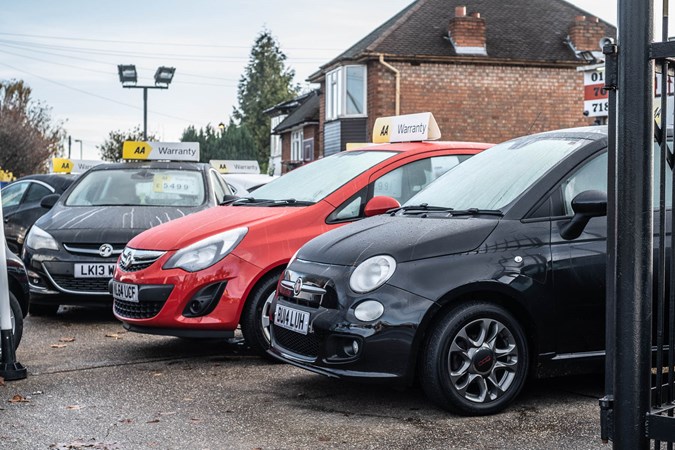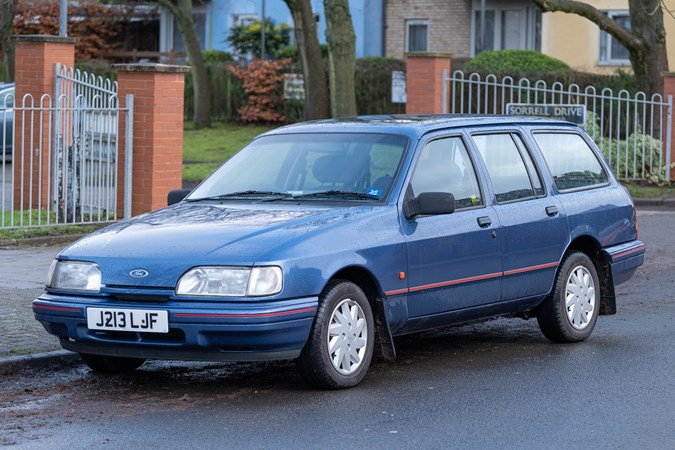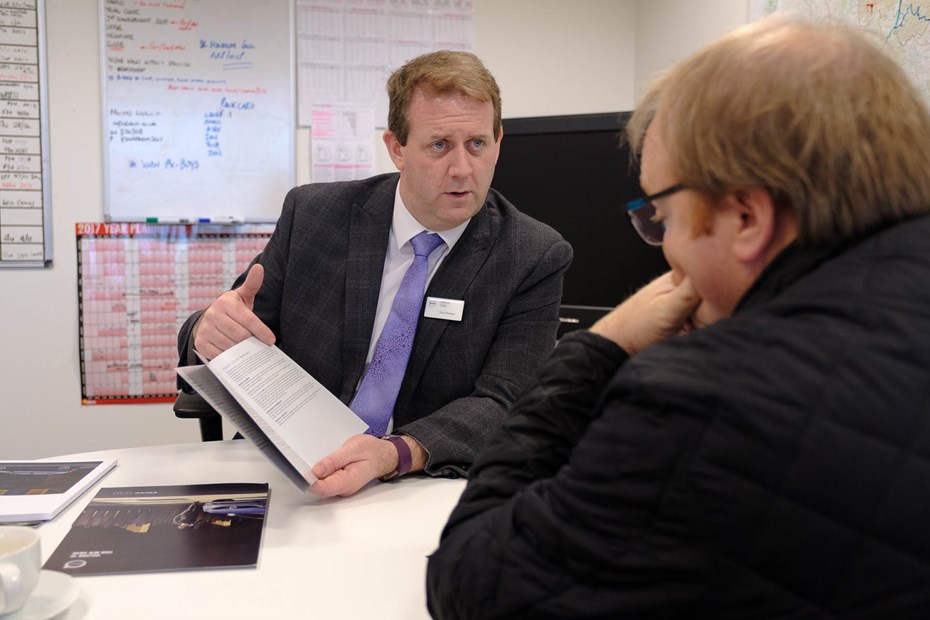Changing your car can be a big event in life – whether buying new or used, cars are often the second-highest household expense after your home. Prices can fluctuate with supply, demand and overall economic circumstances. During periods of high interest rates it’s vital to get the best value for your existing car, and part exchange may not always be the best solution.
While prices of used cars have been harder to predict in recent years, there’s some good news. If your previous car was on a PCP or business-funded lease with a balloon payment to make, the figures given at the start of the deal will be quite out of date. It’s likely that your part-ex car will be worth more than you budgeted when it reaches the end of the agreement.
Choosing to sell your car yourself or accept a part exchange deal at your local dealership is a decision most drivers face at some point, and there are pros and cons to both options. In this article we will explore the various scenarios where a cash purchase or part exchange may work best, and we’ve got some tips on how to value your car as well.
What is a part exchange car, and how does part-ex work?
- Used cars have increased in value, particularly Euro 6 diesels and cheap-to-run family cars
- Reduced supply of new and used cars, and tighter margins, mean fewer incentives
- Higher interest rates favour reducing the amount you finance is best
Part exchange is where your car dealer takes your existing vehicle in as part payment for your next car, whether you’re buying for cash or on finance, and regardless of whether your car is new or used. Traditionally new car sales will give you a higher offer overall, though you may be losing out on discounts, whereas used car sales will generally only give a high part-ex value against cars that have a very high margin, unless there are finance incentives.
An additional factor in part exchanging for a new car is scrappage. These schemes come and go, and may relate to low emissions zones, electrification, or be disguised finance incentives unrelated to actual disposal of old vehicles.
Part exchange – cost to change is key for used cars
For most used car buyers the cost to change is the crucial point when part exchanging; how much you spend to get a car with a longer life, cheaper running costs or better suited to your needs can then be compared with the ongoing costs of running an existing vehicle. With a new car, the sums could be affecting the initial payment or monthly figures, getting cash back, or influencing the finance rate and deal you can take advantage of.
When part exchanging your car all you have to do is hand over your car and paperwork, change your insurance to the new vehicle, and your part-ex car is transferred into trade ownership (which does not add an owner to the V5 history). That’s the last you hear of it. Unsurprisingly, In most cases selling your car through part exchange is the easiest route, and when ordering a new car you may find dealers will let you keep your car until your new one is ready.
Can you part exchange a car with outstanding finance?
You can advertise your car for sale if it is financed via hire purchase or PCP, and you can sell it if you purchased it with an unsecured personal loan. In the case of PCP or hire purchase (or other loans secured on the car, such as those short-term loans secured on the V5) you must clear the finance before actually selling the car.
Part exchanging a car on PCP
If you part exchange, this will be handled for you. Most main dealers will be swift and effective here, some independent dealers can be a little slow to clear the finance, so watch out for being left with a liability. Your paperwork will include the settlement figure, often referred to as a minimum guaranteed future value, but that is not necessarily the value of the car.
If you choose to part exchange (or pay this figure to keep the car) you are not liable for excess mileage charges or damage repairs, though your part-ex value will naturally reflect changes in condition. In the rare cases that your car is worth less than the settlement on a PCP, but it is in otherwise good and expected mileage condition you can hand it back and that’s the end of the agreement. This may be particularly relevant to your finance decisions on a new car if buying a petrol or diesel just ahead of 2030’s proposed ban.
The majority of PCP deals were written to leave a small profit on the residual value which dealers would use to fund your next PCP deal. For some models of car that profit may be much greater now and you could find yourself with enough cash to buy a second hand car outright that meets your needs – worth considering when interest rates are high. An independent used car dealer may even buy your car and give you a cheaper, older car from stock in exchange for the balance.
Part exchanging a car on finance such as HP (hire purchase) or secured loans
Fundamentally, this is the same as a PCP. The dealer commits to pay the finance off (settlement figure) when they take your car – if there’s a balance left between the value of your car and the amount to pay, this will be used towards your next vehicle. The key difference between hire purchase and PCP is that your car is fully paid off at the end of the term.
In some rare cases you may need a new car and owe more on your old car than it’s worth; dealers may be able to add that negative equity to your new finance package but look very carefully at the costs. You may be refinancing low-interest debt at a much higher rate, and for a longer term.
If your car is financed and in negative equity put you have paid more than 50% of the balance, you may be able to return it under ‘voluntary termination‘. This is a good protection against being stuck with a car that has developed serious faults during the loan term, but it’s not easy – it may be preferable to rolling finance forward, however, particularly if it is an older car financed at a high rate from a car supermarket.
Can you part exchange a leased car?
No, it’s not legally yours.
If your car is provided under a lease agreement such as a company car scheme or Motability, you cannot sell it or trade it in and not all schemes will offer a competitive price to buy it out. In many cases if you need to change cars mid-lease, you’ll will be liable for the balance of payments or a penalty. In that case we would recommend asking for the figure to buy the car from the leasing company (for example, if it’s a company car and you are changing jobs) and then comparing that with a car buying service, as it may be cost-effective. This process can take weeks to complete.
Is part exchanging your car good value for money?
It is arguable that a part exchange through a dealership gives you leverage. The dealers want to sell you a new car, and your old car is used stock that they can sell for a profit – surely they will give you a decent deal on your old car to make the sale?
That isn’t always be the case, particularly when buying a used car. Second hand car traders are very selective about the stock they have to sell, and they need to make a profit. The chances are, if you are being offered what looks like a good deal, you’re choosing a car that is less popular or has been hard to sell, and your own car might be more appealing than you realise and easy to sell on your own for more.
When your car comes to the end of a PCP agreement the expectation is that you’ll go back to the dealer, hand it back and there will be a token sum towards the deposit on the next deal. In the past this felt like a shield against high depreciation, but now many used cars are worth more than the minimum guaranteed final value.
Most franchised new car dealers will give you a fair figure straight away. The wider market may not be as transparent, so make sure you know your car’s trade value and check what car buying services such as Motorway may offer. Factor in the hassle of selling, and you’ll generally find the part exchange deal does offer good value for money if the dealer is sticking to current trade prices.

Why has part exchanging a car become less predictable?
Several factors have influenced the used car market since 2020; constrained supply of new cars, rising costs for dealers and the impact of clean air zones and ULEZ on the resale value of diesel models in particular. Higher energy costs have caused wild variation in electric car values, and rising interest rates impact everyone.
Those interest rates mean also mean offering you a large trade-in with cash back or service plans, rather than a discount on list price, can keep the bulk of the car’s value as a debt. It increases your costs over a longer time, and ultimately earns the car manufacturer more as their agreed finance rate is profit above the base rate.
When buying a new car as part of a cycle of PCP monthly payments every two, three or four years, you’ll probably be okay. Though the new price and deposits have risen, the value of your trade in could be much higher as used car prices have risen (quite dramatically for popular models) – and a new car deal will reflect that increased value as the unexpected boost could make the difference between you choosing to keep your existing car or buying a new one.
But if you tend to finance a second hand car, pay it off and trade it in for another second hand car, your exposure to a poor deal is much greater. It isn’t even that the dealers are trying to rip you off – they’re simply in a position where the value of the cars they have to sell has varied wildly and incurred losses, so they need to be cautious.
Once you have a realistic picture of what your car is worth, see how much equity you have once any finance is paid off and consider how much that would reduce the loan on your new purchase. Many nearly-new cars have relatively high APR deals; that three-figure difference in trade value could save much more in interest, compared with selling privately and buying later.
One thing remains constant – you are more likely to receive a lower price for your old car when part exchanging than you could if it was sold privately. That’s how used car dealers make money, after all. But if you don’t do your research first, you might end up marketing your car for far less than it’s worth even to the trade.
Some smaller dealers may be relying on this lack of up to date knowledge when buying cars from classifieds.
New car buyers: selling your old car privately
- Can get more money, but you’ll be mobbed by armchair traders and scrap dealers
- Selling privately makes sense for older, cared for cars
- Be wise, don’t give strangers too much info in the advert
If you opt to sell your old car yourself, then you need to be prepared that it may take longer than going into a dealership for a part exchange. In theory, you will make more money on the car because the dealer will want to make a profit, so you can sell it for less than they would but still get more than they will pay.
In practice, since 2020 the private sales market has changed dramatically. When cash payment once offered a lot fo security, these days physical currency is less common as many local bank branches have closed. Electronic fraud is more prevalent, and wannabe amateur car dealers litter the likes of Facebook and Gumtree offering low figures on everything listed in the hope they’ll get a bite.
It’s not a pleasant experience, for the most part, and you should be careful not to give your car’s location away if it is parked on the street – cat theft is a real problem, and thieves look for unattended cars via such adverts.

However, demand for used cars in retail means there are easier routes to selling a used car – such as reaching a wide range of traders at once. You might expect these to focus on newer, low mileage models, but cars up to 15 years old, even diesel and high mileage ones, frequently get offers that match classified-ad expectations for a no-hassle trade sale.
If you do choose to sell privately, there are a number of platforms available to sell your car, from websites and newspapers to online auctions or even just pinning up an ad in your local café. All have varying levels of success and traction with people, but online classifieds (such as selling via eBay) are popular with buyers and sellers alike. Some sites such as Autotrader offer free adverts for cars under £1,000.
Don’t overlook the amount of time you need to commit to advertising and arranging viewings with possible buyers.
Before you decide: make sure you know what your car is worth
Parkers has been providing car valuation and guidance for buyers since 1972, and our figures are based on an immense amount of data from real-world transactions. Once you have a valuation, use that as a baseline and compare your car with advertised cars for sale, completed listings on eBay, and for older models, local Facebook Marketplace adverts.
For specialist models, check owners’ forums and classifieds if you can see them.
You have heard of We Buy Any Car, but that is only one buyer. Motorway gets offers from many different dealers, and they collect the car from you. We’ve seen examples such as a 2009, 100,000 mile Alfa Romeo 159 Sportwagon that languished for two weeks with an advert at £1,700 sell to a car buying service for £1,928, after an initial offer of £2,118 (mileage difference accounts for the value change).

While we don’t condone the idea on environmental grounds (and the risk of modern classics being scrapped), for a broken, worn out old car scrappage schemes have remained popular with dealers and are now being adopted by cities such as London and Birmingham to support clean air zones.
From the dealers’ perspective
The majority of dealers in 2023 simply do not have enough cars to sell, and would probably prefer you didn’t go in with cash to haggle for a discount on your next new car. Most franchised dealers are aiming to steer away from discounting too heavily and instead relying on low-rate finance options and manufacturer-backed incentives to help bring in customers.
But this argument totally depends on the quality of the part-exchange. Low mileage used cars and PCP returns are in demand, but if it’s a rust bucket and nothing can be done with it, the dealer might prefer the cash option due to the hassle of having to dispose of it (if it’s that bad, several websites now compete for scrap cars, and they usually give better offers than if you try a local scrap dealer directly).
So which option is best?
There is no right or wrong option, it all comes down to whether or not you have the time to sell the car yourself, and how much risk you want to accept in the transaction. You might be surprised by how much the value of an older used car has changed, and there are definitely traders who are counting on you not knowing that for both older, cheaper used cars and desirable mainstream models under five years old.
One thing is certain, though. Used cars are not the undervalued, unwanted ‘scrap’ they were presented as being at the start of the 21st century. Interest rate rises, the loss of deep-discounted overstock and cheap finance deals mean a good second hand car is a winning strategy to keep to the cost of living down – and they are in demand.
Just so you know, we may receive a commission or other compensation from the links on this website - read why you should trust us.












